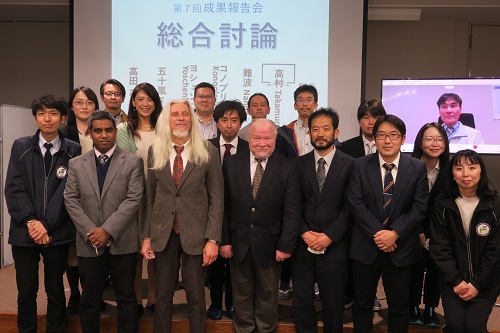IER is ideal work environment for me.
Alexei Konoplev (Vice Director / Project Professor)
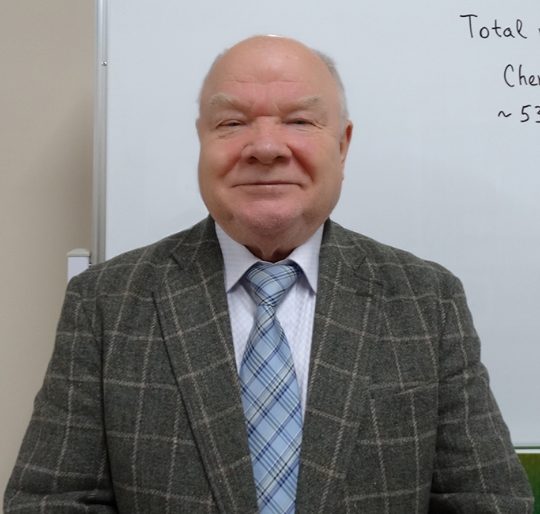
Message to people who are interested in studying Environmental Radioactivity
Why did you decide to become a scientist? And what made you interested in your research field?
I went to school in the 1960s and it was the Soviet Union then. Great breakthroughs and accomplishments in science and technologies were made in the Soviet Union at that time: satellites (Sputnik) and astronauts were launched to space, fundamental sciences such as physics, chemistry, and mathematics were thriving. These disciplines were popular among students and many wanted to become scientists, I was one of them. After I graduated the Chemistry Department of Lomonosov Moscow State University which is one of top reputable universities in the country, I chose environmental chemistry as my research field because it was a high-potential avenue for future studies, as people were becoming more aware of ecological issues including pollution.
Those who work in science should get obsessed and stay obsessed by it. It is more than a job; it goes with you all the time. It requires imagination and creativity, poses problems, and offers challenges. I have never regretted about my choice in life.
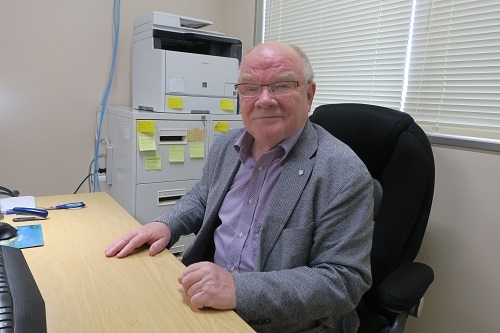
What kind of research did you conduct before you came to IER?
After graduation of the University, I started working in one of the leading research institutions in environmental monitoring Research Production Association “Typhoon” and was employed there for 36 years until 2013 when I moved to IER. I started my career working in the field of atmospheric chemistry. My area of interest was composition of the upper and middle atmosphere and processes occurring there. In 1983 I completed and defended my Ph.D. thesis on this subject. After I got Ph.D., I opted to pursue research of the “soil-water” environment and became engaged in the studies of wash-off and behavior of pesticides and other persistent organic pollutants (POPs) in terrestrial and aquatic environment. I changed my research target from atmosphere to soil-water environment because this new field seemed most promising and challenging, and this remains my primary interest up to now.
In April 1986 when conducting field studies of pesticides wash-off from catchments in Kiev region (Ukraine) we were informed that a major nuclear accident occurred at Chernobyl NPP, which was not far from where we were. RPA “Typhoon” was designated to organize monitoring and prediction of environmental radioactive contamination due to the accident, as well as provide recommendations for decision making and developing a remediation and decontamination strategy. I was offered to lead an experimental group performing field studies of Chernobyl-derived radionuclides in the soil-water environment. Working on POPs, frankly speaking, I was not particularly eager to switch over to radioactivity, but my boss convinced me to take the task by reasoning that the geo-environmental processes are the same for POPs and radionuclides. He also literally said: “the country is on fire”, implying that this was of critical importance for the society at that point in time. As soon as in May and June 1986, jointly with the Ukrainian Hydrometeorological Institute, our group started field studies of Chernobyl-derived radionuclides wash-off on contaminated catchments in the ChNPP near zone. Results of these studies were used for predicting radioactive contamination of rivers and water reservoirs on the territories exposed to radiation. These works were of great importance because the Dnieper cascade reservoirs were used for supply of drinking water to millions of people in Ukraine and 4 million of Kiev dwellers.
In parallel, I pursued laboratory investigations of sorption-desorption and speciation of Chernobyl-derived radionuclides in the soil-water environment including fuel particles and their transformation. In 1998 I defended the thesis for the academic degree of Doctor of Science, synthesizing outcomes of field and laboratory studies of Chernobyl-derived radiocesium and radiostrontium behavior in the soil-water environment. The resulting data were used in numerous national and international projects.
Meanwhile, we continued investigation of POPs behavior in the environment. From 1999 to 2013, I worked in the capacity of Head of Center for Environmental Chemistry in RPA ”Typhoon”, dealing with environmental behavior of various pollutants, ranging from radionuclides to heavy metals, mercury and POPs.
International cooperation became increasingly significant since the 1990s and I was involved in programs of International Atomic Energy Agency (IAEA), World Meteorological Organization (WMO) and United Nations Environmental Program (UNEP), as well as numerous other projects, among them AMAP (Arctic Monitoring and Assessment Program). It was my honor to be a member of Russian delegations at the conferences on major environmental conventions, specifically Minamata Convention on Mercury and Stockholm Convention on Persistent Organic Pollutants.
I also had experiences to work in Germany as Alexander von Humboldt research fellow and in USA, more specifically in Pacific North-West National Laboratory (Battelle) at Hanford, the site of reprocessing facility contaminated due to weapon-grade plutonium production.
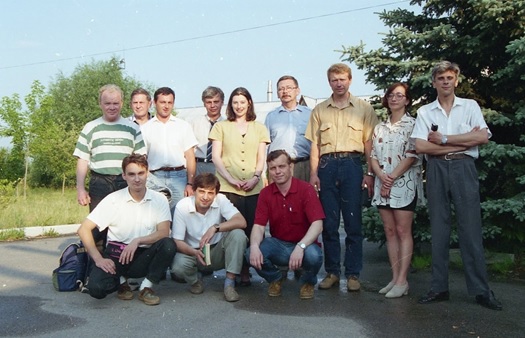
What brought you to IER?
When the accident at FDNPP occurred, it came to my mind that given my record of 25 years investigations of Chernobyl-derived radionuclides it would be appropriate to make use of my knowledge in Fukushima to compare the behavior of radionuclides of different origin in significantly different geoclimatic conditions. The environmental behavior of radionuclides is governed by two key factors: 1) speciation which, in turn, depends on accident scenario, and 2) geoclimatic conditions determining direction and rate of radionuclides transformation in the environment.
As the saying goes, if you really want something to happen it happens. I participated in the symposia held in Fukushima, Koriyama and Tokyo on the FDNPP accident-related issues in 2011 and 2012. In the course of discussions, my desire to work in Fukushima became even stronger. About the same time, the plans to set up Institute of Environmental Radioactivity (IER) at Fukushima University were made public. I met Prof. Nanba (current Director of IER) and other professors who visited European institutions from Japan and was invited to take part in the competition for the position of Project Professor at the newly established Institute. I came to IER in November 2013.

Could you please tell about your research at IER? What do you feel is interesting or exciting in the research?
IER is ideal work environment for me. Here I have been given an opportunity to concentrate on doing research and science. I am also happy to contribute to the activity of Graduate School, having a chance to share expertise with future researchers.
For many years, my academic interest has been focused on a fundamental issue of how two kinds of processes relate and compete in the environment: transport and physicochemical transformation of contaminants. These processes have different time scales and need to be understood deeply through detailed studies. The most important thing, however, is to be able to differentiate and identify the controlling processes and those of less significance, or even negligible, for specific environment and time interval. This applies to all types of contaminants, whether radioactive, organic or inorganic pollutants. In Fukushima I see it as my task to tackle this fundamental problem based on using Fukushima-derived radiocesium, which is of most environmental significance, in the geoclimatic conditions of the Tohoku region of Japan. Therefore, our research is focused on radiocesium wash-off from contaminated catchments and its river transport, with allowance for physicochemical processes of transformation, more specifically sorption, desorption, fixation and remobilization, and leaching from glassy hot particles (cesium balls). Along with basic research goals, results of our studies can be used in models and are important for decision-making and developing strategy of remediation, decontamination, and rehabilitation. This is crucial not only for Fukushima contaminated territories, but also other areas that may happen to be exposed to contamination due to nuclear accident or incident.
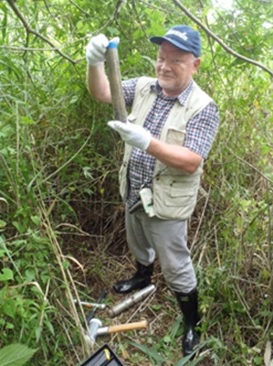
Research gives you the power to study problems the world is facing. Research is all about discovering, learning and sharing. It’s about having new ideas and creating. It’s great to have a job where we are paid to constantly learn new things and use that learning to help improve something in the world. This is what I find inspiring and exciting in research.
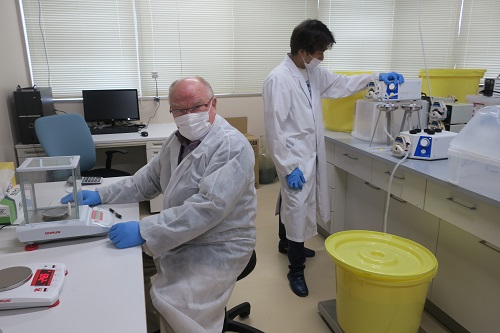
What is your research plan for the future? What is your goal?
My current intent is to transfer my 40-years knowledge and experience to younger scientists and colleagues in IER. We plan to continue collaborating within many projects, and sharing expertise is an essential part of them. It is also a delight to be engaged with Master course students, giving lectures on Nuclear Disaster Studies, Environmental Radioactivity Studies and conducting practicum classes such as field sampling in the FDNPP exclusion zone and laboratory processing.
Given my age of 66, I am planning to write books and papers summarizing theoretical and experimental results of Chernobyl and Fukushima related studies, as well as thinking in a broader context.
Concerning the priority of environmental radioactive contamination studies, I suspect, the gravity of the problem will be decreasing with time and IER should be mindful of this, when developing plans for future decades. IER could probably go beyond studies of artificial radioactivity and expand its activity into new research areas such as naturally occurring radionuclides and other classes of contaminants, both organic and inorganic.
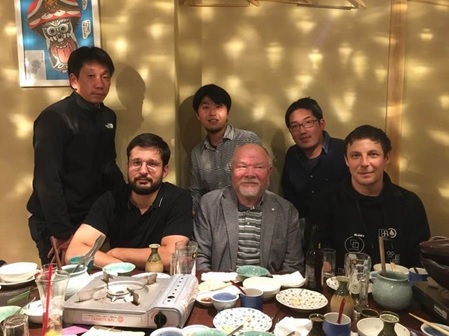
What is your impression to Japan or Fukushima?
By now I have been living in Fukushima for about 8 years and this has been time of many discoveries for me and my wife. We have travelled to many places in Japan from Hokkaido to Kyushu, and every trip was enjoyable. However, for me, the best place in Japan is Fukushima. In winter, it is a joy to do downhill skiing practically every weekend, and in the summer – you can go to the seaside. Going to onsen is another delight to us and these are plenty in the gorgeous mountains of Fukushima. We continue learning a lot about the distinctive culture of Japan. My wife takes ikebana classes and participates in ikebana exhibitions. Couple of years ago we went to the performance of sumo wrestlers and enjoyed it very much. We admire the beauty of traditional gardens, temples and shrines with their balance and harmony, which is important concept and value of Japanese culture. Traditional values are successfully preserved in Japan and this, indeed, can serve as a model for many other countries.
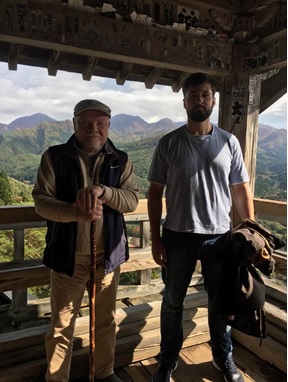
Could we have a message to people who are interested in studying Environmental Radioactivity?
Environmental Radioactivity and Radioecology is based on interdisciplinary studies and requires knowledge of fundamental sciences such as physics, chemistry, biology, ecology, hydrology, soil science and so on. Insights in this area can be generated by focused specialization, on the one hand, and having knowledge in neighboring fields, on the other. I am encouraging those who want to pursue a career in environmental radioactivity to tackle the basic sciences as strongly as possible.
ER offers a unique combination of opportunities to take theoretical classes, conduct field work in the FDNPP near zone and perform studies and experiments in laboratory. Such opportunities are not offered elsewhere in Japan or globally. The state-of-the-art facilities and equipment at IER make possible not only research of radionuclides, but also in adjacent areas such as geomorphology, hydrochemistry, biogeochemistry and ecology. Those who graduate IER will be able to connect what they learn about environmental processes in IER to their professional life, even if it is not directly related to radioactivity.
The friendly atmosphere at IER makes all of us feel at home. Having the opportunity to work with people from different backgrounds, your eyes open to different perspectives. When you work in an institution with so many different languages and cultures, scientific discovery becomes something that can cross borders.
